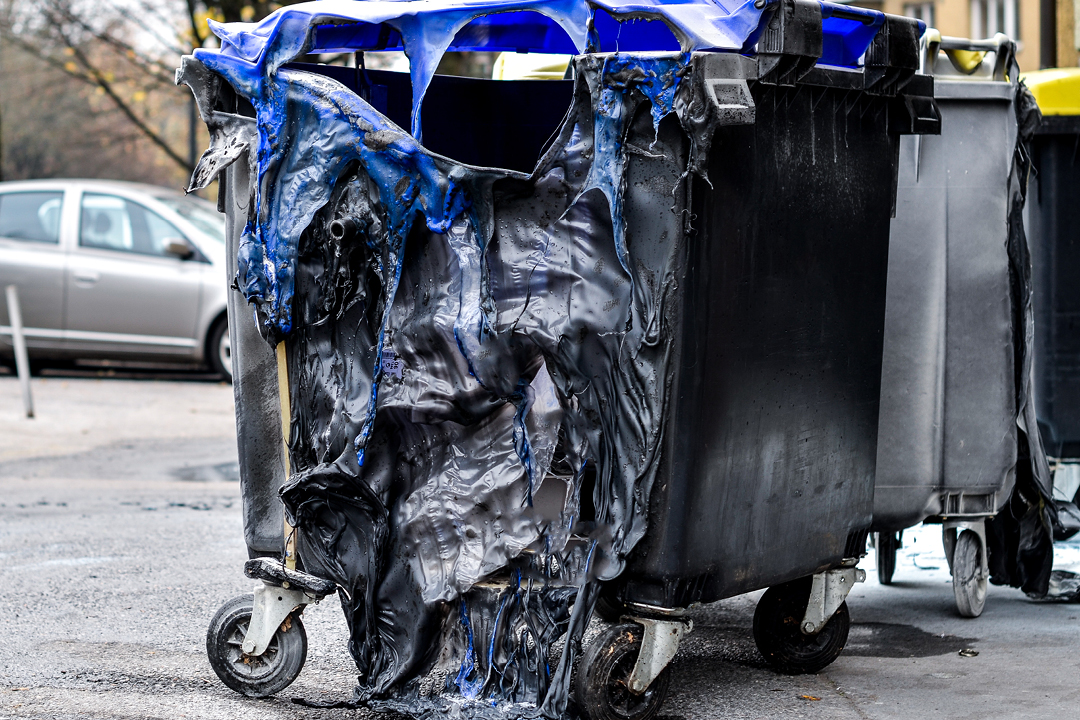
The storage of refuse and recyclable materials represents an inherent fire risk due to its combustibility, the excessive heat and smoke that is given off in the event of a fire, and the risk this poses to life when stored close to dwellings and particularly those with communal spaces. It is therefore very important that landlords consider the following to keep residents safe:
1. Internal bin stores
Bin stores within high-rise blocks are often internal and fed by chutes which are costly to maintain in a safe condition so that in the event of a fire they prevent toxic smoke spreading within the building. Chutes are also prone to blockages and discourage residents from recycling, so many landlords are choosing to decommission the chutes and move the bins to an external location.
2. External bin stores
External bin rooms are often located close to building entrances and can still represent a significant fire risk, particularly when combined with the presence of sidewaste and bulky items such as discarded furniture and mattresses which can in themselves be an arson trigger, and further still where they are insecure and in areas frequented by rough sleepers or drug-users.
3. Unsecured bins
In either event, the original bin store will almost certainly not have sufficient capacity for the number of waste and recycling bins now required as a consequence of increased waste volume, local authority recycling requirements and collection frequencies. This inevitably leads to additional loose bins being stored within the communal space, representing a serious risk to residents.
4. 6m rule
Blocks of flats are subject to routine Fire Risk Assessment under the Fire Safety Act 2005 and unsecured bins are frequently identified as a significant risk, based on guidance from the CFPA-E on bin separation distances from dwellings. This is often summarised as `bins must not be stored within 6m of a dwelling’ but this is sometimes impossible to achieve due to space constraints.
5. Safety distance calculation
It is worth noting therefore that the safety distance will actually vary according to the number and size of the bins, and this is calculated by taking the width of object facing the dwelling plus 2.5m, and should be measured from the closest point at which fire could enter, i.e. door or window opening, for example.
6. Fire resistant structures
Where this recommended safety distance cannot be achieved using the 6m rule or the safety distance calculation, then the bins must be contained within a structure providing at least 30-minutes fire resistance. This will also prevent unauthorised removal, whether for the convenience of residents or risk of arson.
